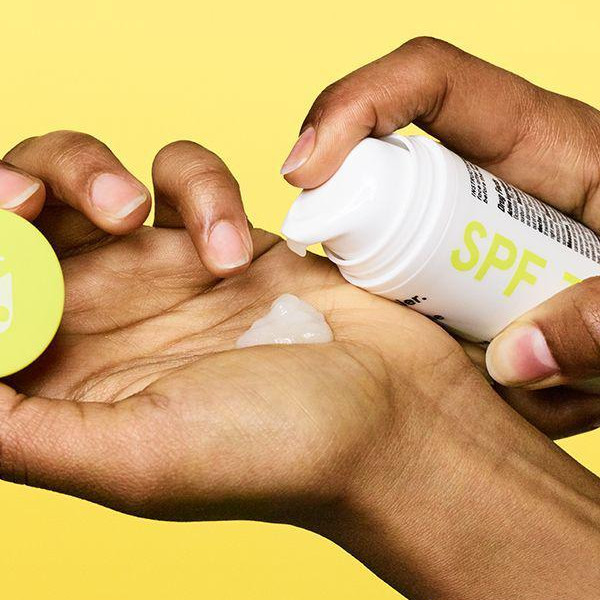You’ve heard a thousand and one reasons why you should apply sunscreen, and now you are ready to make a purchase. The only problem is: there are at least 5 different SPF brands all promising to shield your skin from the sun. Even more confusing are terms like UVA/UVB/Broad Spectrum, PA+, mineral, chemical, et cetera splashed across the containers.

So, which of these sunscreens should you add to your daily routine, and how do you know you are getting the best value for your money?
What does SPF mean?
SPF stands for ‘Sun Protection Factor’. The numbers associated with SPF are meant to indicate the amount of time you can be in the sun while wearing that formula (as opposed to being out sans any coverage) and avoid burning. So a proper layer of SPF 15 would shield you 15 times longer than if you had no SPF at all.

Now, while an SPF 30 sunscreen supposedly covers you twice as much as SPF 15, it does not mean it will stay on your skin longer. The maximum amount of time you should go between reapplications is 2 hours – or after towelling off post-swim or sweat. In practice, SPF’s effectiveness wanes quickly, no matter how strong it is from the start.
Given this need to reapply often, it’s better to familiarize yourself with each SPF number’s overall defensiveness. SPF 15 will block roughly 93% of UV rays when applied thoroughly. That’s a huge benefit, but a simple upgrade to SPF 30 will shield 97% of rays. It only increases slightly from there. SPF 50 blocks 98%, and SPF 100 blocks 99%. For this reason, professionals recommend you always use SPF 30 as a baseline. You’re much, much better off applying 30 SPF diligently than slapping on some gaudy triple-digit number just once.
UV Coverage
Always make sure your sunscreen is broad-spectrum, which means it shields you from all types of UV rays.

There are three kinds of UV rays (A, B, and C), but we primarily discuss UVA and UVB rays, since UVC rays are bounced by the earth’s ozone layer.
UVA rays have the longest wavelength, and as such, are able to get into the middle layers of your skin. They are the ones that cause your skin to age faster since much of your skin’s firmness, resilience, and elasticity is determined by what happens at this subsurface level.
UVB rays have shorter wavelengths, and they tend to stay on the outermost layer of the skin. They’re the rays that lead to sunburns and that also cause skin cancer.
Typically, UVB rays are deemed the worse of the pair, but any leathery texture, sun spots, and wrinkles can be attributed to UVA rays, so it’s best to block them both.
What is PA+?

There’s a more recent addition to sunscreen labels, in the form of PA+ (with as many as 4 ‘plus’ signs after the ‘PA’). This is short for “Protection Grade of UVA” and is a Japanese rating system that measures how effective a formula is at thwarting UVA rays.
That’s because the typical SPF scale determines how long a sunscreen will shield you from sunburn—which, given what you learned above, correlates specifically to UVB rays. So, by combining an SPF scale and a PA+ scale, you know what your overall defensiveness is against UVA and UVB rays.
Oddly enough, there is no correlation between the number of ‘plus’ signs and the strength or duration for which they shield the skin. So a PA++++ product doesn’t necessarily defend you four times as strong or as long as a PA+.
However, if this is hard to follow or all of the extra information stresses you out, just stick with the basics: Use a broad-spectrum SPF 30, applied liberally, every two hours, or after exposure to water.
Mineral or chemical sunscreen?

Another thing to consider: Whether or not your sunscreen is mineral (or sometimes “physical”) or chemical (or some combination of the two).
You can usually tell based on whether it absorbs easily into the skin (chemical), or leaves a matte, slightly chalky cast atop the skin (mineral/physical).
Chemical ingredients that block UV rays do so by absorbing the rays and neutralizing them so that they cannot render any harm to your skin cells. These most commonly include avobenzone, octisalate, oxybenzone, and homosalate. These ingredients can be absorbed into the bloodstream and are sometimes detected in the blood weeks after applications—hence why some people remain sceptical of chemical SPF applications. They also might not be great for coral reefs. However, people have been using these chemical sunscreen formulas for decades without any severely devastating side effects.
Mineral ingredients sit atop the skin and simply bounce UV rays away, barring entry. These typically include zinc oxide and/or titanium dioxide. Effective formulas leave minimal to no chalky cast on the skin, while low-quality formulas might have you looking like you just powdered your entire face or body.
How to properly apply sunscreen

1. In general, you should apply your sunscreen approximately 30 minutes before exposure to the sun, given it can take some time to seep into the skin and provide full, thorough coverage.
2. The most surprising thing is how much SPF is recommended per application: Roughly one shot glass for your entire body is considered a proper dose. Most of us are applying far less sunscreen than this, meaning we aren’t getting the coverage we think we are.
3. You still need to apply SPF on cloudy days. UV rays can penetrate clouds—sometimes as many as 80% of them, and they can also bounce off snow if you live in areas that experience winter.
Source: GQ
